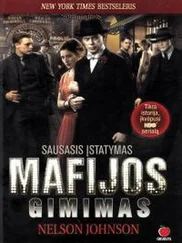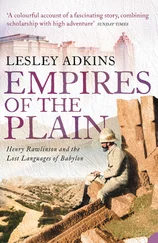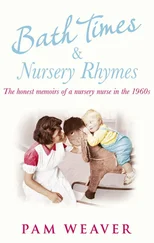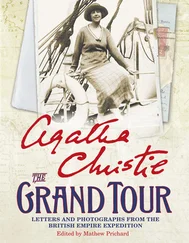Nelson Johnson - Boardwalk Empire - The Birth, High Times, and Corruption of Atlantic City
Здесь есть возможность читать онлайн «Nelson Johnson - Boardwalk Empire - The Birth, High Times, and Corruption of Atlantic City» весь текст электронной книги совершенно бесплатно (целиком полную версию без сокращений). В некоторых случаях можно слушать аудио, скачать через торрент в формате fb2 и присутствует краткое содержание. Жанр: Старинная литература, на английском языке. Описание произведения, (предисловие) а так же отзывы посетителей доступны на портале библиотеки ЛибКат.
- Название:Boardwalk Empire: The Birth, High Times, and Corruption of Atlantic City
- Автор:
- Жанр:
- Год:неизвестен
- ISBN:нет данных
- Рейтинг книги:5 / 5. Голосов: 1
-
Избранное:Добавить в избранное
- Отзывы:
-
Ваша оценка:
- 100
- 1
- 2
- 3
- 4
- 5
Boardwalk Empire: The Birth, High Times, and Corruption of Atlantic City: краткое содержание, описание и аннотация
Предлагаем к чтению аннотацию, описание, краткое содержание или предисловие (зависит от того, что написал сам автор книги «Boardwalk Empire: The Birth, High Times, and Corruption of Atlantic City»). Если вы не нашли необходимую информацию о книге — напишите в комментариях, мы постараемся отыскать её.
Boardwalk Empire: The Birth, High Times, and Corruption of Atlantic City — читать онлайн бесплатно полную книгу (весь текст) целиком
Ниже представлен текст книги, разбитый по страницам. Система сохранения места последней прочитанной страницы, позволяет с удобством читать онлайн бесплатно книгу «Boardwalk Empire: The Birth, High Times, and Corruption of Atlantic City», без необходимости каждый раз заново искать на чём Вы остановились. Поставьте закладку, и сможете в любой момент перейти на страницу, на которой закончили чтение.
Интервал:
Закладка:
Prior to 1900, the resort had a single school system with Black and White children being educated together, entirely by White teachers. In 1881, community leader George Walls organized a Literary Society and used it as a vehicle to push for improved education for Black children. Walls presented the local school board with a resolution of his group demanding the hiring of a Black teacher. The board responded by adopting a resolution of its own supporting the idea, but waited 15 years until 1896 before finally yielding and actually hiring a Black teacher.
The lengthy gap in time between the resolution and hiring was in large part a product of the controversy in the Black community caused by Walls’ proposal. Walls wanted Black teachers for Black children. He was, in effect, promoting an early Black nationalistic policy of separation of the races, which many Black leaders rejected. Those Blacks favoring integration believed that if the cost of securing Black teachers was the loss of integration, then the price was too high. Walls had his opponents. M. E. Coats, owner of a popular Northside amusement house, and C. Williams, secretary of the Price Memorial AME Zion Church Literary Society, were bitterly opposed to Walls’ idea. They feared that Walls’ proposal would do more harm than good.
As the controversy raged, Coats and Williams organized a mass meeting of all Blacks. According to historian Herbert J. Foster, Walls might have been physically attacked but for several articles in support of Walls, which appeared in the Atlantic City Review . One such article stated:This young man is right. The child is at a disadvantage with a white teacher because she does not know his history and environment. She does not have the patience and understanding. When a boy’s mother leaves home at six o’clock in the morning, her child is not out of bed, at school time he jumps up, rushes to school without his face washed or his hair combed, a white teacher does not take that boy aside and make him wash his face, she just goes on with the lesson, ignoring that boy, because she does not know that he is not able to get attention from home. If Negro children have Negro teachers, they will have an inspiration, they will have members of their own race, for ideals and not white ideals that are so diligently instructed about in the schools.
Over time, Walls’ proposal gained acceptance and the school board hired Hattie Merritt. Merritt was born in Jersey City and was a graduate of Jersey City Teachers Training School. She was assigned to teach an integrated class at the Indiana Avenue School. Things didn’t go well.
Miss Merritt found teaching in an integrated system more than she had bargained for. Her problem wasn’t the children but rather the parents. The White parents made her job impossible by coming to school and standing outside the classroom, glaring and taunting her as she tried to teach. Many of these parents demanded that the school board remove their children from her class. Merritt complained to Walls and he in turn complained to the school board. The end result of the controversy came in 1900 when the board decided on a policy of separate education for Black children and the employment of additional Black teachers to instruct them.
With the school board’s decision made, Black children were moved out of the city school system and into the basement of the Shiloh Baptist Church. This didn’t work out, and the following year the Black students were moved into the Indiana Avenue School, one of the older school buildings, which was converted to an all Black school. As the resort’s population grew, the building wasn’t large enough to handle the number of school-age Blacks. The next move was to divide the New Jersey Avenue School; half for Whites and half for Blacks. There was a door for “White” and a door for “Colored,” and separate play yards to keep the children from mingling.
By 1901, W. M. Pollard, Superintendent of Atlantic City School, claimed proudly that separate classes for Black children was a good thing. In his annual report he stated:The employment of colored teachers for separate colored classes has worked very successfully in our city. We employ ten colored teachers. These teachers occupy rooms in the same building where white children attend. The separation is continued as far as the seventh grade, after that the colored pupils attend the same grades with the white children. This plan has been in many respects beneficial for the race.
It’s difficult to determine who was vindicated by the results—Walls or his critics. But the outcome was segregation for as long as it could be maintained.
Unfortunately, there was no one like Walls to lead the charge on healthcare for the Black community. Health services for Blacks were as segregated and meager as Whites could make them. Blacks were not permitted in White doctors’ offices and routine medical services were dispensed out of a separate Blacks-only clinic in a back room in city hall until 1899. In that year, the first public hospital was opened, but it would only treat Blacks in wards separate from Whites. While the hospital hired Blacks for cooking and cleaning, there were none to care for patients. As late as 1931, nearly 100 Blacks were employed as orderlies, cooks, janitors, waiters, and maids, but not one was employed as a nurse or doctor. The few local Black physicians there were could not see their patients in the hospital, and qualified applicants for training as nurses were turned away by the hospital’s administration, forced to go to other cities for their education. The message was clear: African-Americans were servants and that was all they could ever hope to be in Atlantic City.
While upper- and middle-class Blacks of the Northside prospered, the seasonal employment, squalid housing, and poor health services for a majority of Blacks took their toll on the quality of life. Without proper food, clothing, shelter, or medical care, many Black babies didn’t make it through the winter months. A large percentage of their parents contracted tuberculosis at a rate more than four times that of Whites.
A city that could host millions of tourists refused to provide facilities for combating tuberculosis among its Black population. To openly admit to such a problem would have been bad publicity for the tourist economy, and Atlantic City would have none of that.
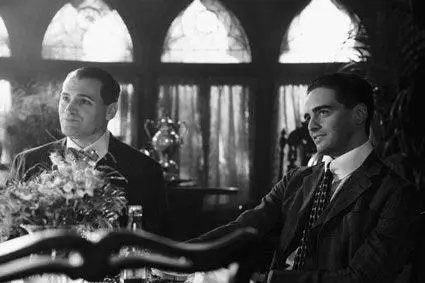 4
4 
Philadelphia’s Playground
Prostitution was a ticklish subject in the resort. The presence of brothels in turn-of-the-20th century Atlantic City was well known, but talked about little. That’s why the exposés on the local prostitution trade published in the Philadelphia Bulletin in early August 1890 caused such a stir.
August was the resort’s busiest month, and the locals felt the Bulletin ’s timing was deliberate. The summer was going well for the entire community. The weather was cooperating and tourists flocked to town, spending freely. The Bulletin was Philadelphia’s most popular newspaper, and many of its readers were regular visitors to Atlantic City. The newspaper had tracked down the infamous Lavinia Thomas and Kate Davis, together with dozens of other veteran prostitutes. They had been chased out of Philadelphia for operating “disorderly houses” and found refuge in Atlantic City. In a series of front-page articles, trumpeted by banner headlines, the Bulletin listed the names and addresses of more than 100 local madams and their houses, and righteously condemned their presence. A page one editorial scolded the resort, “What community would hail, as a blessing, or as an evidence of prosperity, the establishment of a vile brothel in its midst?” The newspaper continued its scorn adding, “There are more than 100 of these dens of infamy in Atlantic City. Just think of it—100 such places in a city of this size!”
Читать дальшеИнтервал:
Закладка:
Похожие книги на «Boardwalk Empire: The Birth, High Times, and Corruption of Atlantic City»
Представляем Вашему вниманию похожие книги на «Boardwalk Empire: The Birth, High Times, and Corruption of Atlantic City» списком для выбора. Мы отобрали схожую по названию и смыслу литературу в надежде предоставить читателям больше вариантов отыскать новые, интересные, ещё непрочитанные произведения.
Обсуждение, отзывы о книге «Boardwalk Empire: The Birth, High Times, and Corruption of Atlantic City» и просто собственные мнения читателей. Оставьте ваши комментарии, напишите, что Вы думаете о произведении, его смысле или главных героях. Укажите что конкретно понравилось, а что нет, и почему Вы так считаете.

